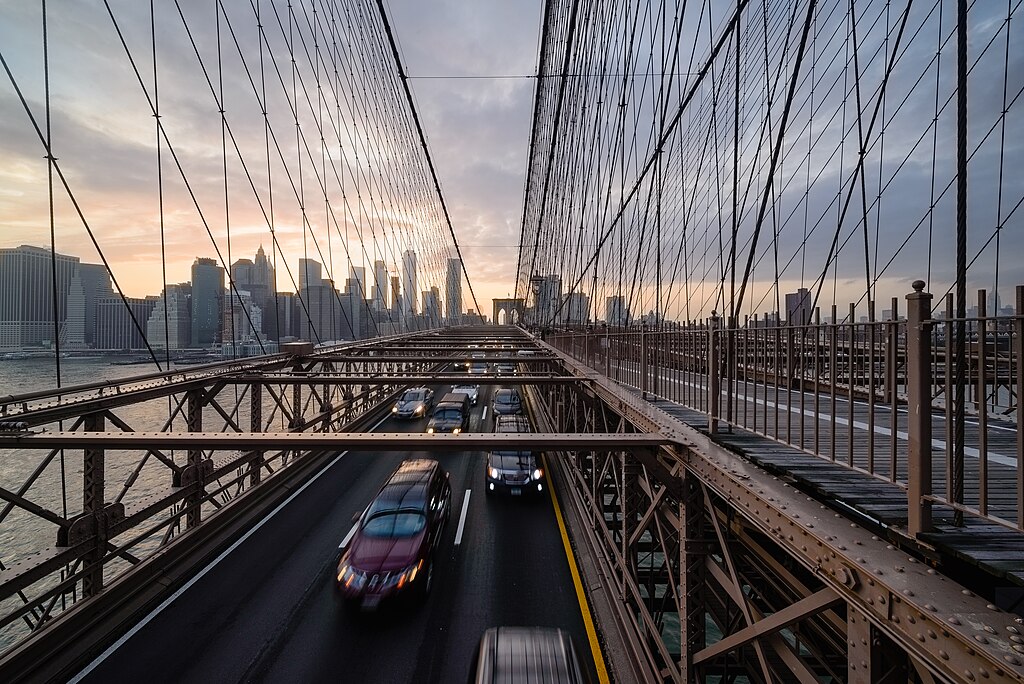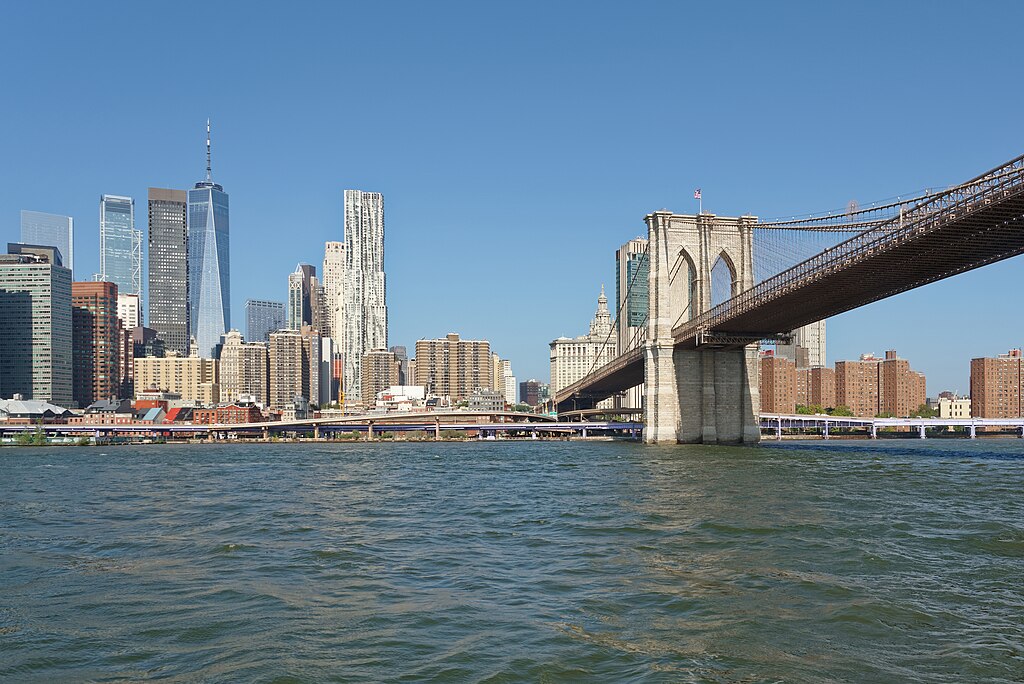Brooklyn Bridge: NYC’s Engineering Icon
Spanning the East River and uniting the boroughs of Manhattan and Brooklyn, the Brooklyn Bridge has been celebrated as a marvel of engineering and architecture since its completion in 1883. More than just a vital transit link, it remains a powerful symbol of New York City’s ambition and ingenuity, inspiring generations with its unique blend of beauty, utility, and innovation.
Vision and Design Origins
The Brooklyn Bridge was designed by John A. Roebling, a renowned German-American civil engineer whose expertise in suspension bridges set the stage for this groundbreaking project. Roebling envisioned a structure that would transcend the technical and physical limitations of its era, connecting two bustling cities over the surging waters of the East River. At the heart of his vision was the incorporation of new materials and construction methods, enabling a bridge that would be both longer and stronger than any of its predecessors.
After Roebling’s untimely death in 1869, his son, Washington Roebling, took command of the project. Despite battling debilitating illness—likely due to decompression sickness from working in pressurized caissons—Washington oversaw the construction, often relaying instructions to workers from his apartment overlooking the bridge site.

Engineering Innovations
The Brooklyn Bridge’s engineering legacy begins with its towers, which soar 276 feet above the river, constructed from granite and limestone in the Gothic Revival style that gives the bridge its iconic appearance. These towers anchor the bridge’s four steel cables, each composed of thousands of individual wires, which span 1,595 feet—the longest suspension found anywhere in the world at the time of its completion.
The bridge holds the distinction of being the first to use steel for its main cables. Steel’s superior strength and durability allowed Roebling’s design to safely support significant loads, paving the way for other major bridges around the globe. The innovative use of pneumatic caissons to build the foundation beneath the water also represented a quantum leap in bridge construction technology—a method that required workers to labor in pressurized underwater environments, laying the groundwork on bedrock beneath the river. These caissons not only drove deeper and created more stable foundations but also increased construction risks for workers, many of whom suffered severe health issues. Roebling’s meticulous planning included built-in redundancies and an over-engineering philosophy, ensuring the bridge’s strength would outlast its time.
For a deeper look at these innovations, see this engineering analysis from ASCE.
Historical Impact and Vital Statistics
Upon its opening on May 24, 1883, the Brooklyn Bridge instantly became a celebrated technological achievement. That day, approximately 150,000 people and 1,800 vehicles crossed the bridge, marking a new era for New York City and its growing population. The bridge's dimensions remain impressive to this day: its full length, including approaches, stretches over 6,000 feet; clearance at the center is 135 feet; and its towers rise above the city at a staggering 276 feet.
The bridge’s elevated pedestrian promenade—a feature separating foot traffic from vehicles—was a forward-thinking design choice, creating a welcoming space for strollers and cyclists and transforming the bridge into a popular destination as well as a transport artery. As of 2024, more than 100,000 vehicles, nearly 29,000 pedestrians, and over 5,500 cyclists cross the bridge every day.
Explore more about the bridge’s history and construction at Britannica.
Architectural and Cultural Significance
The Brooklyn Bridge’s Gothic arches, sturdy stone towers, and graceful steel cables endlessly draw photographers, artists, and filmmakers. It has been referenced in countless works of art, from Andy Warhol’s vivid prints to Georgia O’Keeffe’s contemplative paintings, and even in poetry welcoming the “wedding” of Brooklyn and Manhattan. Circus showman P.T. Barnum once famously marched 21 elephants across the bridge to demonstrate its stability to the world, further embedding it within popular lore.
Serving not only as a symbol of progress but as a backdrop to New York’s dynamic skyline, the bridge links neighborhoods, businesses, and communities. Its continual presence has witnessed historical change, social movements, and urban renewal, bearing silent witness to more than a century of growth and transformation.
For more on its cultural impact and legacy, the stories behind the Brooklyn Bridge highlight why it remains so influential.

Enduring Legacy
Designated a National Historic Landmark in 1964 and a National Historic Civil Engineering Landmark in 1972, the Brooklyn Bridge remains at the forefront of New York City’s infrastructure and cultural identity. Continuous renovations and upgrades testify to its lasting resilience and adaptability, from the expansion of traffic lanes in the mid-20th century to the latest addition of dedicated bicycle paths supporting greener transportation.
The bridge’s presence in literature, art, and even popular celebrations—such as fireworks and cultural festivals—continues to inspire awe and reverence for the engineering minds who conceived and built it. Its capacity to blend utility and artistry ensures that it will remain a quintessential New York icon for generations to come.
The Brooklyn Bridge Today
Walk across the Brooklyn Bridge and witness the Manhattan skyline unfurl on one side and Brooklyn’s neighborhoods stretch on the other. The experience is sensory as much as architectural: the sound of traffic and footsteps, the vibration of city life, and the vistas stretching far beyond the river. Vendors line the walkway, selling snacks and souvenirs to locals and tourists alike.
The bridge’s power lies not merely in its engineering features but in its ability to connect—physically, culturally, and historically. It stands as a reminder that the very best landmarks unite communities, challenge limitations, and inspire innovation. The Brooklyn Bridge is as essential today as when it first opened its roadways to the world, a shining testament to resilience and brilliance rising above the heart of the city.
To make an appointment, please click the button below:
Appointments